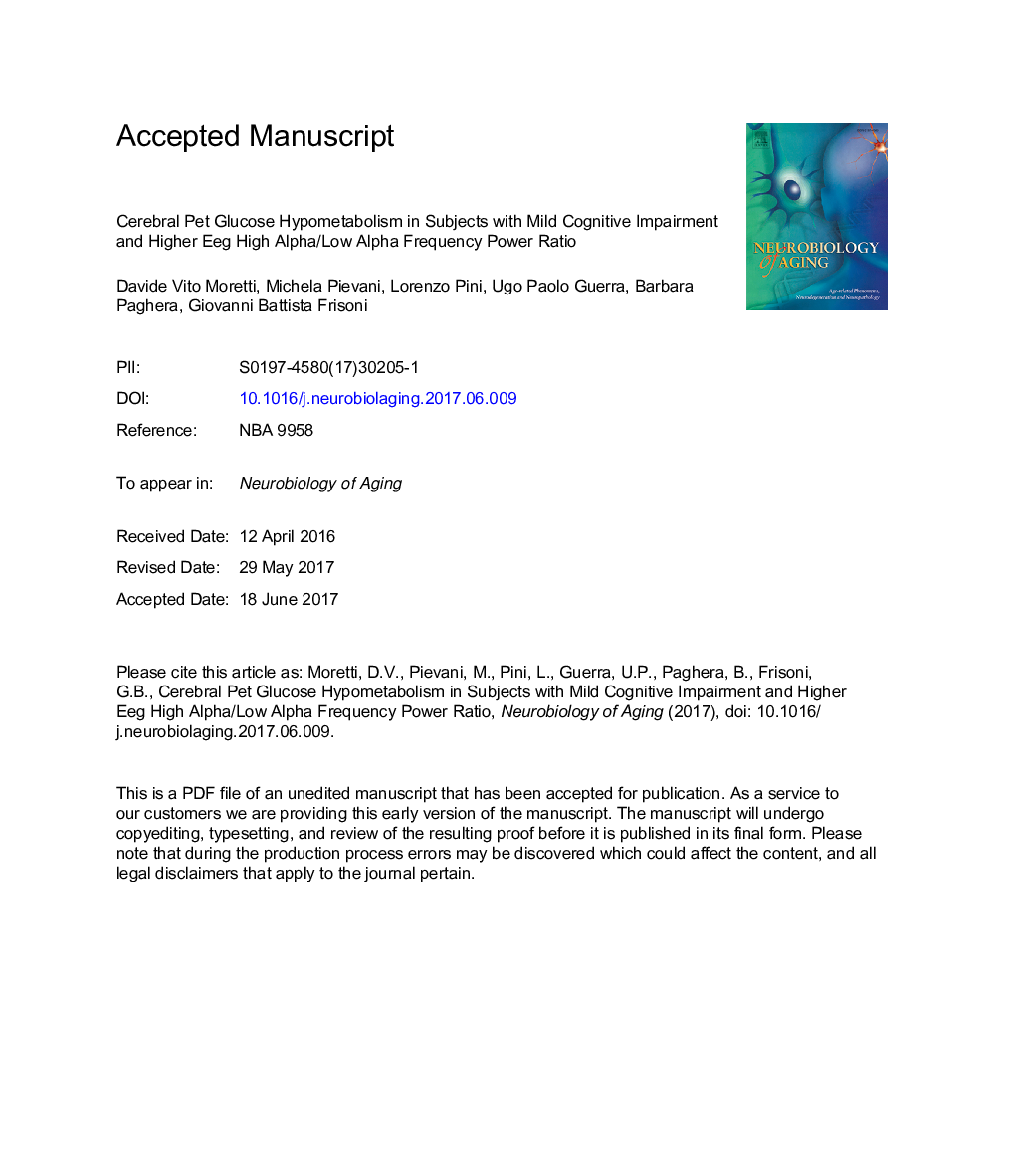| Article ID | Journal | Published Year | Pages | File Type |
|---|---|---|---|---|
| 4932692 | Neurobiology of Aging | 2017 | 46 Pages |
Abstract
In Alzheimer's disease (AD) research, both 2-deoxy-2-(18F)fluoro-D-glucose (FDG) positron emission tomography (PET) and electroencephalography (EEG) are reliable investigational modalities. The aim of this study was to investigate the associations between EEG High-alpha/Low-alpha (H-alpha/L-alpha) power ratio and cortical glucose metabolism. A total of 23 subjects with mild cognitive impairment (MCI) underwent FDG-PET and EEG examinations. H-alpha/L-alpha power ratio was computed for each subject and 2 groups were obtained based on the increase of the power ratio. The subjects with higher H-alpha/L-alpha power ratio showed a decrease in glucose metabolism in the hub brain areas previously identified as typically affected by AD pathology. In subjects with higher H-alpha/L-alpha ratio and lower metabolism, a “double alpha peak” was identified in the EEG spectrum and a U-shaped correlation between glucose metabolism and increase of H-alpha/L-alpha power ratio has been found. Moreover, in this group, a conversion rate of 62.5% at 24Â months was detected, significantly different from the chance percentage expected. The neurophysiological meaning of the interplay between alpha oscillations and glucose metabolism and the possible interest of the H-alpha/L-alpha power ratio as a clinical biomarker in AD have been discussed.
Related Topics
Life Sciences
Biochemistry, Genetics and Molecular Biology
Ageing
Authors
Davide Vito Moretti, Michela Pievani, Lorenzo Pini, Ugo Paolo Guerra, Barbara Paghera, Giovanni Battista Frisoni,
